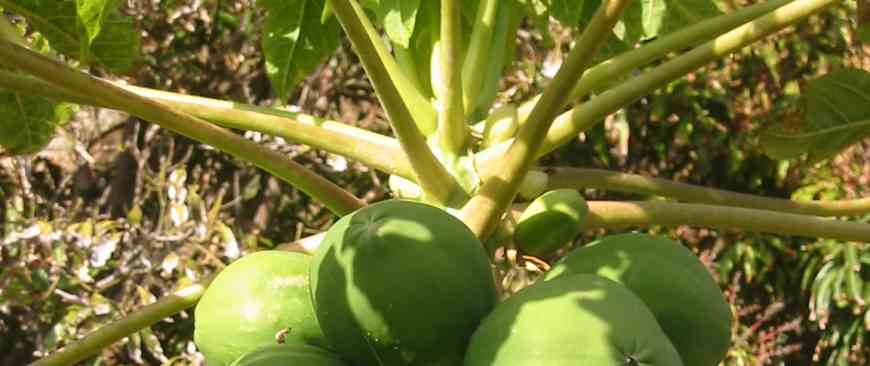
The microclimate of Fajã dos Padres favours the growing of subtropical species, some of which would hardly adjust to the remaining areas of Madeira.
Mangoes, avocado, banana, grapes and, in a smaller scale, a wide set of exotic fruits such as papaya, pitanga (surinam cherry), araça (a brasilian fruit) figs, passion fruit, tabaibo, pineapple, and even pomegranates, fill the environment of Fajã with colours and tropical flavours.
The potential of the area for agriculture has been exploited since the beginning of the settlement. It was this potential that justified all the effort dedicated to this small and remote piece of land, which was so difficult to reach until about two decades ago.
The vineyards were introduced since the beginning and have been dramatically optimised by the Jesuit priests. Sugar cane has occupied a large percentage of the property after the crisis of the Madeira wine industry in the 19th century and until the beginning of the 1930s, when the incentive of the “Cape line” has reinforced the growing of products that were then exported to England.
Tomato, sweet potato and other horticultural products were almost totally replaced by bananas after the Second World War, and their production has remained almost exclusively for private consumption.
The banana fields have occupied all the extension of Fajã for almost 30 years.The fact that it was a permanent culture allowed crops throughout the whole year. On the other hand, this made it very difficult for all the production to be shipped, since the transportation had to be made by sea and, at the time, the loading of goods was done directly on the beach.
In the beginning of the 1980s the property was widely restructured. Some mechanical methods were introduced as well as automatic irrigation systems and new cultures were introduced in addition to the banana production. The malmsey vineyards, which in the meantime had disappeared, were introduced again, as well as a new set of fruit products that were expected to make the most of the extraordinary microclimate of the property.


 +351 291 944538
+351 291 944538

